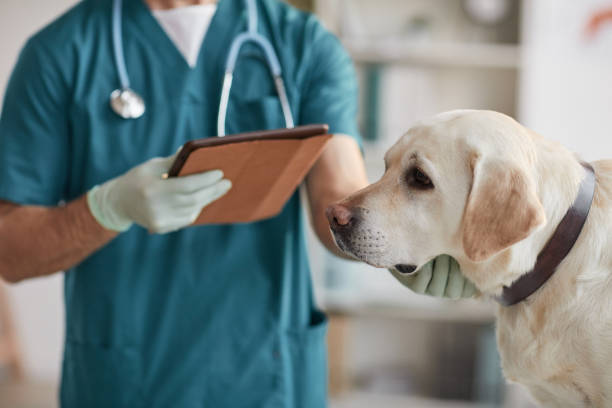Introduction
Veterinary medicine has made huge strides in recent years. Animal welfare is a major focus of modern veterinary medicine. Advances in veterinary medicine include new diagnostic techniques and treatments. A new study shows why dogs have such a good sense of smell.

The latest developments in veterinary medicine
The latest developments in veterinary medicine are a testament to the power of science. Advances in animal welfare and diagnostic techniques have helped make modern veterinary medicine an integral part of our daily lives, from pets at home to farm animals and wild creatures. One such development is the ability for veterinarians to treat diseases like cancer using immunotherapies–the same type of treatment that people use to fight cancer.
Another major focus has been on improving the lives of pets by developing treatments for diseases like arthritis and heartworm disease, which affect millions of dogs each year. Newer technologies also allow us to identify genetic mutations associated with certain illnesses without having to conduct invasive tests such as X-rays or surgeries; this means that vets can provide faster diagnoses while also reducing costs associated with testing procedures (such as anesthesia costs).
Veterinary medicine has made huge strides in recent years.
It’s a growing field, with a rapidly growing industry. Veterinary medicine is also a global industry that provides services to animals across the world on an international scale.
In the United States, the veterinary industry is a multi-billion dollar one, and it’s growing at a rate of about 5% per year. This means that there are more employers looking for qualified veterinarians every year.
The field of veterinary medicine is a growing one, and it’s a great career choice for those who want to work with animals. The opportunities in this field are endless, and there are plenty of ways to specialize within the industry.
Veterinary medicine is also a growing field that provides services to animals around the world. The industry is a multi-billion dollar one, and it’s expected to keep growing at about 5% per year over the next decade. This means that there are more employers looking for qualified veterinarians every year. The field of veterinary medicine offers many great career opportunities for those who want to work with animals.
Animal welfare is a major focus of modern veterinary medicine.
Veterinary medicine is a profession that deals with the health and well-being of animals, while also providing medical treatment when necessary. Veterinary surgeons, dentists, vets and other professionals work together to provide advice on how best to manage an animal’s condition or illness.
Veterinarians are involved in research into animal diseases and treatments as well as helping develop legislation relating to animal welfare . This includes ensuring that all animals kept as pets have good quality diets for optimum growth; ensuring that they are not kept in unsuitable conditions (such as overcrowded cages); providing advice about how best to treat injuries caused by other pets or people; teaching children how not to hurt cats/dogs etc.; educating people who want their own pet but don’t know what would be best for him/her e.g., whether he/she should be given raw food?

Advances in veterinary medicine include new diagnostic techniques and treatments.
To understand the advances in veterinary medicine, it’s important to have a basic understanding of how these developments came about.
In addition to new diagnostic techniques and treatments, there have been some breakthroughs in veterinary science that are relevant for both humans and animals. One such development is gene therapy, which allows doctors to treat disease by delivering genetic material directly into a patient’s cells. Another is immunotherapy–a type of treatment that uses antibodies (proteins produced by your immune system) to stimulate an immune response against cancer cells or other pathogens within the body.
It’s important to note that these treatments are not just for humans. Some veterinary hospitals have begun using immunotherapy and gene therapy on animals, which has led to some incredible results. So what is gene therapy?
Gene therapy is a treatment that uses genetic material to treat disease. The goal of gene therapy is to deliver healthy genes directly into the cells of your body so that they can begin manufacturing proteins or other molecules necessary for normal cell function.
Gene therapy has been used to treat many diseases, including hemophilia, cystic fibrosis and leukemia. In the early 2000s, it was also successfully used on two children with a form of severe combined immunodeficiency (SCID)–a disorder that prevents your body from producing T-cells.
A new study shows why dogs have such a good sense of smell.
A new study has found that dogs have a much better sense of smell than humans. The findings could help explain why dogs are such good at finding drugs, explosives and other substances in the air that human noses cannot detect.
The study showed that dogs can detect chemicals in the air even when they’re not there at all–and they do it by sniffing tiny molecules called volatiles (which means “volatile”). Humans can also do this, but only if we’re exposed directly to those same volatiles before inhaling them through our noses. Dogs aren’t as limited by their ability to absorb these chemical compounds–they can sniff them out even if you don’t give them any direct exposure whatsoever!
Scientists have discovered that dogs can sniff out breast cancer in humans.
The study, published in the journal PLOS ONE, found that dogs can detect breast cancer in women who have not been diagnosed. In addition to detecting breast cancer in humans, the dogs also detected a higher-than-average number of malignant tumors when sniffing on a patient’s chest area.
The researchers say this could mean that dogs could be used as a tool for early detection and possibly even treatment options for women who have been diagnosed with breast cancer but whose tumors are currently undetectable by mammogram screenings.
The study included 48 women with breast cancer and 32 women without the disease. Each woman was asked to wear a shirt for 24 hours prior to her visit at the hospital. The shirts were then placed in sealed bags, which were given to a team of three specially trained dogs.
The dogs were trained to sniff a woman’s shirt and then lay down if they detected the scent of breast cancer. The dogs correctly identified 77 percent of those with breast cancer, while only identifying 49 percent of women without cancer. This means that the dogs were able to detect more than twice as many malignant tumors than what would have been expected by chance alone.

Conclusion
The future of veterinary medicine looks bright. New diagnostic techniques and treatments are being developed, and scientists are learning more about the causes of disease in order to develop new cures. Animal welfare is also becoming a major focus for veterinarians, who believe that this will help improve the lives of animals both human and non-human alike.




